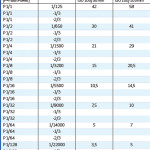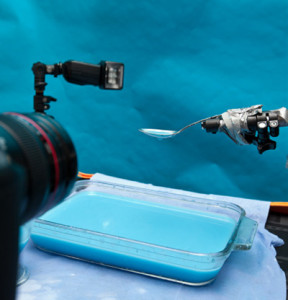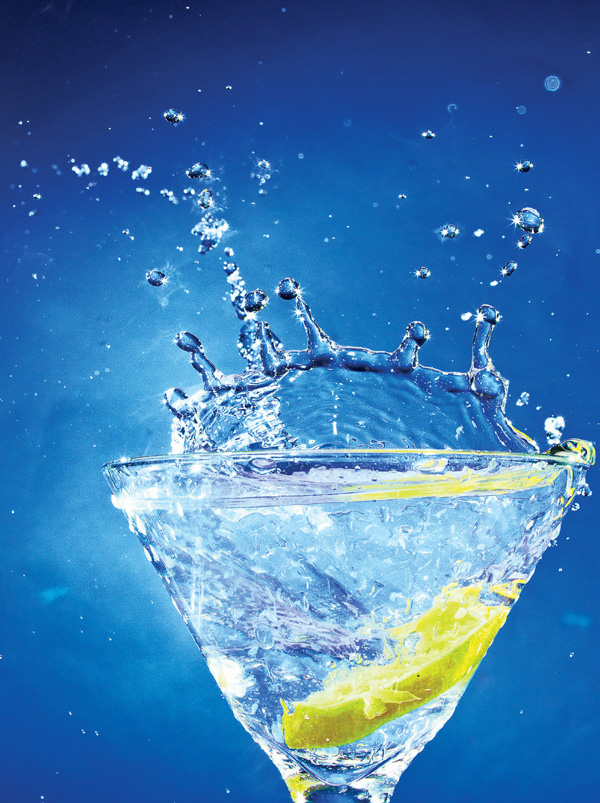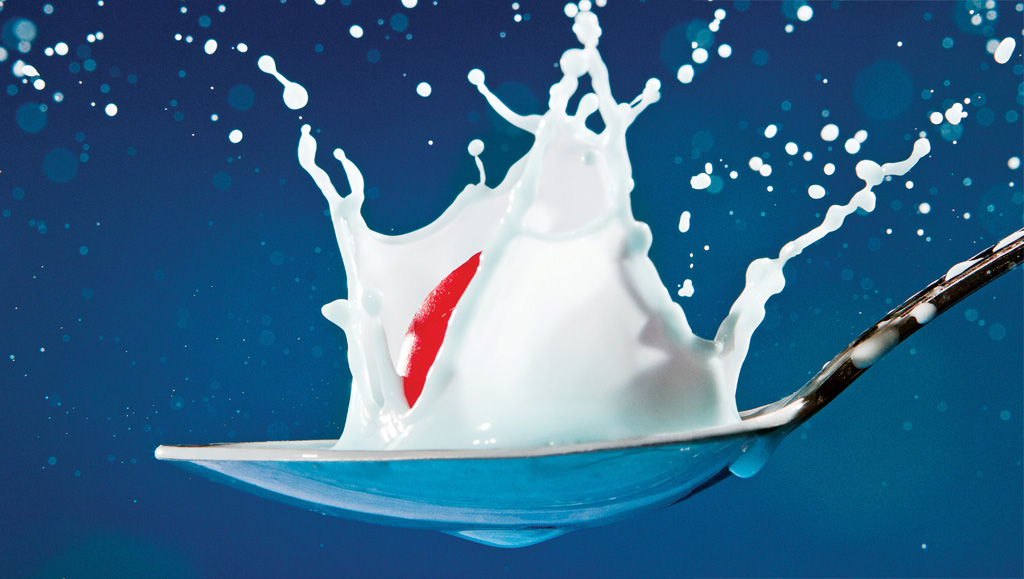High speed flash photography is a technique for capturing images of action that is too fast to be seen with the naked eye. Images that seem mun- dane, like the splash of a drop of milk, can take on spectacular qualities when viewed in ultra-stop motion. How do you achieve images beyond the 1/8,000 of a second speed limit of your DSLR? It is quite simple – just take advantage of the rapid dis- charge of light from your portable electronic flash to capture an instant in time.
When we shoot a moving object at very high shutter speeds in ambient light, getting proper exposure with good depth of field is almost impossible. Also, to get proper exposure in ambient light with a fast shutter speed, you will likely need to raise the ISO on your camera. The downfall of using a very high ISO is that you will have lots of noise (grain) in your image and the image will not be as nice and clean looking as you might like, especially with consumer cameras which don’t handle noise as well as some of the more sophisticated models.
In the summer 2010 edition of PHOTONews, I wrote an article about capturing hummingbirds in flight. In this article, I explained how to use flashes to freeze the little birds in mid air. We can use the same technique for many flying objects, but this time let’s use the technique to freeze some liquid splashes…
To freeze the movement of water and other liquids, we could use ambient light and a very fast shutter speed, but stopping the action with flash will let us use small apertures for better depth of field (and better and easier focus) and we will be able to use a low ISO, so the images will be cleaner and much more spectacular!
 I used Metz flashes for this experiment. The idea is to use the flashes remotely, to position them for the best angle of light. Most professional flashes have an integrated wireless system to let the cam- era trigger them without the need for sync cords or accessory triggering devices. Because we want to make sure that our flashes are set to discharge light at very high speed, we will set them on manual and dial down the power so we can have a very fast burst of light.
I used Metz flashes for this experiment. The idea is to use the flashes remotely, to position them for the best angle of light. Most professional flashes have an integrated wireless system to let the cam- era trigger them without the need for sync cords or accessory triggering devices. Because we want to make sure that our flashes are set to discharge light at very high speed, we will set them on manual and dial down the power so we can have a very fast burst of light.
 This table has been reproduced from the Metz flash manual, and it shows us the speed of the flashes when set to manual setting. So let’s put our flash on manual setting and on low power so we can start the experiment with a fast burst of light. In the table, we see that at 1/32 power the flash speed is 1/9,000 of second, faster than any camera shutter speed.
This table has been reproduced from the Metz flash manual, and it shows us the speed of the flashes when set to manual setting. So let’s put our flash on manual setting and on low power so we can start the experiment with a fast burst of light. In the table, we see that at 1/32 power the flash speed is 1/9,000 of second, faster than any camera shutter speed.
The downside of this technique is that ultra high speed flash is equal to lower power output, so a solution is to use several flashes and to place them close to our subject. Some studio flashes can do the opposite, providing high power and high speed, but for this adventure in lighting let’s use flashes that most of us already have.
In my experiment, I used four Metz flashes, on low power, ISO 250 and f11 to capture the magic. All movement will be stopped by the speed of the flashes, and they provide all the light, so if the flashes don’t trigger, the images on your sensor will be black. So we use the flash speed to stop the action, and only the brief amount of time that the subject is illuminated by the flashes will be recorded on the camera sensor.
There is no real rule for placing the flashes, you can leave the background black by not directing a flash to it, or you can place one flash to illuminate it. Most of the time, you should make sure that no flash is pointing at the lens, or you could have flare that could ruin the shot.
 We are now ready to make some splashes. A tripod and a remote shutter release are two necessary ingredients to success. Fill a plastic bag with liquid and hang it above your “stage”. Make a very small hole in the bag so you can control where the drops will fall, and use manual focus to zero in on that precise area. A good trick is to use the tip of a pen placed on top of the water at the point of con- tact to help manually focus on the area. If you want to make a splash with a spoon or a glass, make sure to attach them to a tripod or anything that can hold them firmly. This gives you a free hand to use a remote, and you can use your other hand to release another object – like the strawberry falling into a spoon of milk. Needless to say, you should have plenty of towels and the necessary items to keep your camera, flashes, and any electronic equipment dry and clean. Water and electronics don’t go well together, be careful!
We are now ready to make some splashes. A tripod and a remote shutter release are two necessary ingredients to success. Fill a plastic bag with liquid and hang it above your “stage”. Make a very small hole in the bag so you can control where the drops will fall, and use manual focus to zero in on that precise area. A good trick is to use the tip of a pen placed on top of the water at the point of con- tact to help manually focus on the area. If you want to make a splash with a spoon or a glass, make sure to attach them to a tripod or anything that can hold them firmly. This gives you a free hand to use a remote, and you can use your other hand to release another object – like the strawberry falling into a spoon of milk. Needless to say, you should have plenty of towels and the necessary items to keep your camera, flashes, and any electronic equipment dry and clean. Water and electronics don’t go well together, be careful!
Use one flash as master and all the others as slaves  (read your camera and flash manuals for the settings appropriate for your gear). You can do great splash photography with one flash and a reflector, but to make it easy, multiple flash is the solution for great results. There are many ways to trigger your shutter to achieve perfect synchronization of the droplet and the flash. One can get very technical and use sound triggers, lasers and all kind of gadgets that can trip the shutter at the perfect moment, but believe me, it is lots of fun to manually try to hit the perfect moment with the camera remote shutter release. You can always go high tech to fine-tune your action stopping adventures – any good photo retailer can show you a range of triggering devices that will do the trick, at a variety of price points.
(read your camera and flash manuals for the settings appropriate for your gear). You can do great splash photography with one flash and a reflector, but to make it easy, multiple flash is the solution for great results. There are many ways to trigger your shutter to achieve perfect synchronization of the droplet and the flash. One can get very technical and use sound triggers, lasers and all kind of gadgets that can trip the shutter at the perfect moment, but believe me, it is lots of fun to manually try to hit the perfect moment with the camera remote shutter release. You can always go high tech to fine-tune your action stopping adventures – any good photo retailer can show you a range of triggering devices that will do the trick, at a variety of price points.
The use of a bowl is pretty simple, fill it up and let drops of water or other fluids hit the surface. One great accessory to use is a fish tank. With a fish tank, you can easily shoot through the glass and get great effects, without splashing water everywhere… Use something colourful for a great background.
Many color effects can be easily achieved using food colouring. There are no rules, just have fun and make sure to keep the equipment dry.
This obviously just the beginning of the magic of high speed images, search for “high speed flash photography” on the web, you will find all kinds of new ways to use your flashes to the max!
Article by Michel Roy










